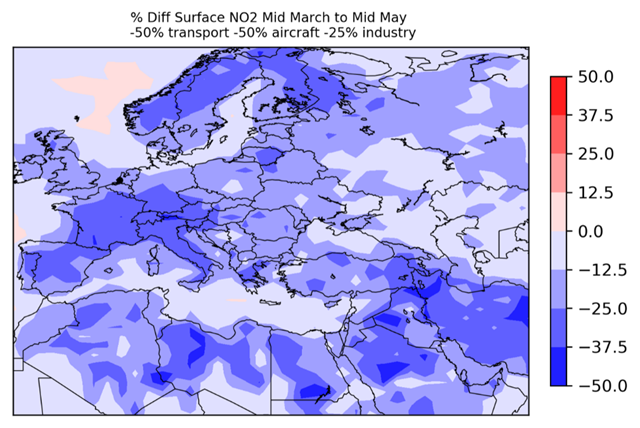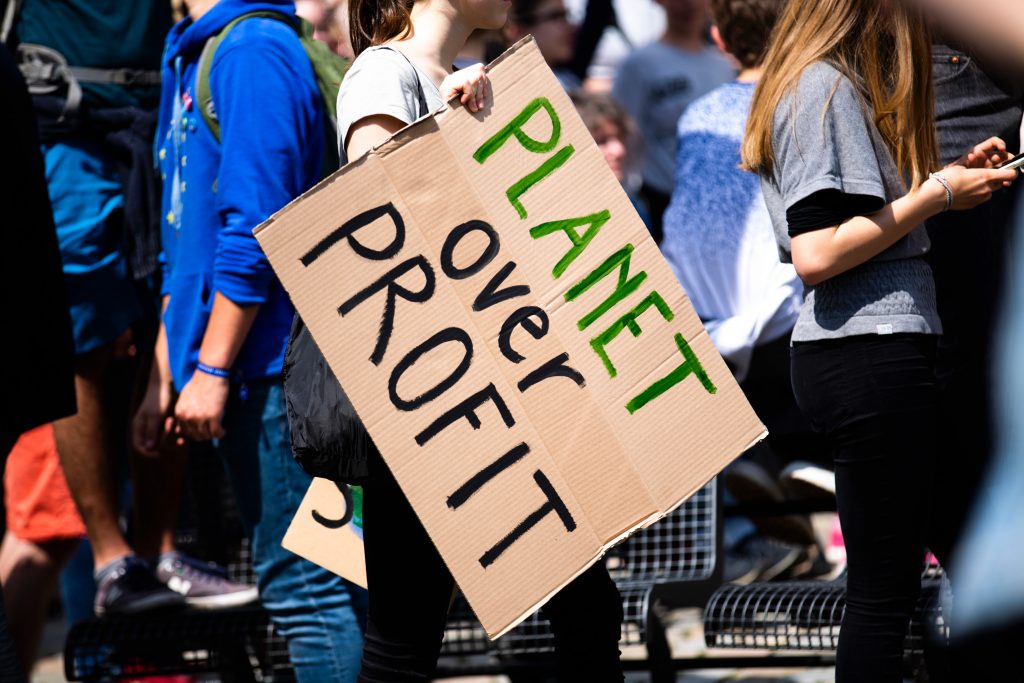Annela Anger-Kraavi, a senior researcher in climate change policy and economics at the University of Cambridge, highlights three positive and three negative effects of the coronavirus pandemic on climate change.
The crisis we are currently facing will not solve the climate crisis by itself. Even if we stopped adding greenhouse gasses to the atmosphere right now, the changes that have already begun will still cause a 1.5°C (2.7°F) manmade temperature increase by the end of this century.
During the current coronavirus crisis, emission levels have not fallen to zero. According to available data, it is thought that the amount of carbon dioxide released into the atmosphere in China decreased by as much as 25% in February. However, the economy there has now begun to recover, and emissions have again increased significantly.
The International Energy Agency predicts that the amount of CO2 emissions could fall by about 5% this year. If we want to limit human-induced global warming to 1.5°C – as we as mankind have promised ourselves – then we must cut yearly emissions by 50% by 2030.
Therefore, to limit climate change, we need to actively reduce greenhouse gasses in every area of our lives, develop new carbon free technologies and change our own behaviour. The coronavirus pandemic will not provide a magical solution to the climate crisis, we must act ourselves.
What are the positive effects of the pandemic on the climate crisis?
There has been a partial decrease in the use of transport and electricity. In some cases, the amount of traffic has more than halved from its level prior to the crisis. As fewer fossil fuels are being burned, the air pollution levels in many places have decreased (for some pollutants, there has been a more than 20% decrease in Europe) and this has positive impact on people’s health.
For example, in India, the Himalayas are now visible from a couple hundred kilometres away for the first time in thirty years – the air has become that clean during the pandemic. This is a good indicator of the positive side effects that switching to clean sources of energy will bring.

Decrease in near-surface nitrogen dioxide in Europe with 50% reduction in land transport, 50% reduction in air travel and 25% reduction in industrial production. Source: Weber J., Shin YM., Staunton Sykes J., Archibald A T., Archer-Nicholls S., Abraham N L.: Department of Chemistry, University of Cambridge and National Centre for Atmospheric Science. The Effect on Climate and Atmospheric Composition of non-CO2 Anthropogenic Emission Reductions Associated with the COVID-19 Pandemic (preliminary results).
We now have a proof that if each one of us does something positive for the environment, the cumulative result is immense. In our current situation, technologies have not changed. What has changed is the way we do things. If each one of us continues to do some of our daily activities in the same way (like having more video conferences or having the weekly shop delivered) after the current crisis is over, the resulting effect on our climate will definitely be positive.
The ongoing pandemic has shown us that, if we genuinely want to, we can solve the issues endangering our planet together. Moreover, it has confirmed that our decisions while fighting a crisis, be that the climate or the coronavirus crisis, need to be based on the best available science. Drinking chlorine will not beat the coronavirus, just as denying the existence of climate change will not end the climate crisis – scientists are the ones we need to be listening to.
What are the negative effects?
The coronavirus has caused a significant drop in the economy. Previous crises have shown that with economic recovery comes a significant increase in energy use (especially that of cheap energy sources such as coal), which in turn leads to a rapid increase in carbon emissions.
To restart the economy, long term solutions are needed in addition to the already proposed short term ones. An example of this would be long-term government guaranteed loans with low interest rates or grants. It would benefit the climate if this type of support would be given under a condition of making companies more environmentally friendly. This would lead to the green recovery of the economy.
For example, in 2009, during the economic crisis, CO2 emissions fell by one per cent and then recovered in less than a year.
People’s focus has shifted away from the climate problem to the understandably more pressing and personal issue that is a contagious disease. What’s worrying is the fact that considering the current situation, we may forget the little we had already done to solve the climate crisis prior to the coronavirus outbreak. A desire to make up for lost time could result in, for example, travelling more and in doing so forgetting the negative impact of our actions on the environment.
According to the World Health Organisation, more than a quarter of a million people lose their lives each year due to climate change (particularly in developing countries). This is a considerably greater number of people than those who have died of coronavirus thus far and this figure continues to increase from year to year.

With the sudden closure of businesses, particularly restaurants and pubs, there was an increase in the amount of food, as well as, for example, beer going to waste. Additionally, one can see more products in shops that have passed their best-before date. This is due to the problems with stocking shops, as people have changed their shopping and consumption habits.
There is at times, a lack of some goods and a huge surplus of others, such as sandwiches and salads which were once eaten for lunch during the workday. Around a quarter of all greenhouse gas emissions in the world are related to wasting food and its decay. This is concerning, especially in a crisis in which many families lack food on their tables.
However, the amount of food bought over the internet has increased. The clientele of many food delivery services has increased many folds. Such deliveries result in the use of less fuel and hence less carbon emissions than if each of us went to buy our groceries ourselves.
The opinions in this article are those of the author. Cover: A melting iceberg in Alaska. Photo by Melissa Bradley/Unsplash.


